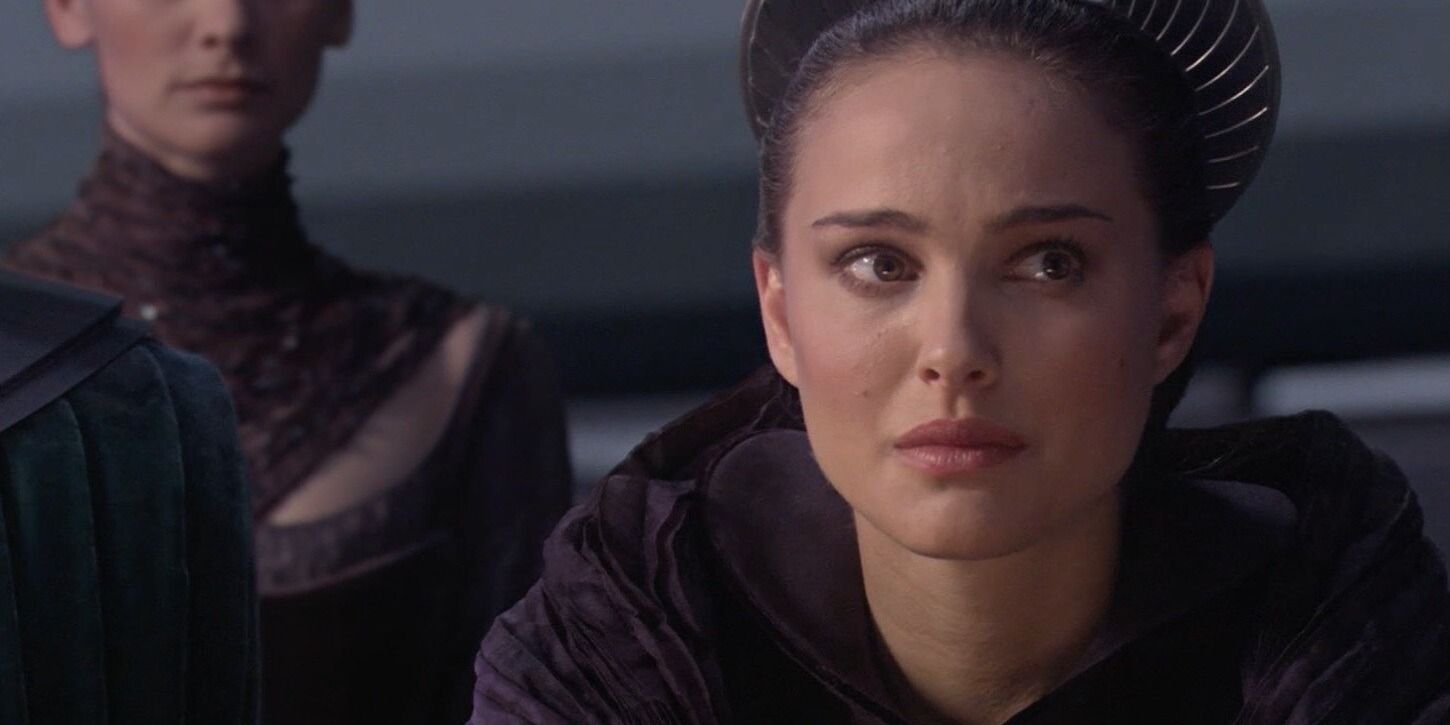20 years after Star Wars: Episode III – Revenge of the Sith, I finally understand why George Lucas made such a controversial decision for one of Star Wars’ most important characters. Although Revenge of the Sith is now seen by many as one of Star Wars’ best movies, it didn’t exactly get a warm welcome in 2005. In fact, many of the complaints about the prequel trilogy that had been directed at Star Wars: Episode I – The Phantom Menace and Star Wars: Episode II – Attack of the Clones were lodged against Revenge of the Sith as well.
Among those were complaints about the dialogue and the pacing, along with myriad other grievances. Because Revenge of the Sith was also tasked with connecting major points on the Star Wars timeline—the prequel trilogy and the original trilogy—and had to conclude several characters’ Star Wars stories, it faced even greater scrutiny. Arguably the least satisfying conclusion was Padmé’s, and how Padmé died remains one of the biggest issues viewers have with the movie. However, I finally understand why Padmé died the way she did, and it has everything to do with Palpatine.
Palpatine Spends The Entire Prequel Trilogy Trying To Silence Padmé
This Is A Focus Of Palpatine’s Plan In All Three Prequel Trilogy Movies
Padmé’s death in Revenge of the Sith was thoroughly dissatisfying. Padmé had proven her strength and bravery when she was just a teenager, yet she inexplicably lost the will to live, even after giving birth to two babies. This was entirely incongruent with her character, and it felt like an even bigger insult that Star Wars never really provided an answer for what directly caused Padmé’s death. Some believe she died of a broken heart (which makes her death all the worse), while others believe Palpatine drained her life to save Anakin/Darth Vader (a much better possibility).
Sadly, we may never get a direct answer from Star Wars, given how much time has pᴀssed since Revenge of the Sith. Yet, it’s only now, 20 years later, that I realize Padmé’s death was really the end of a pattern that was seen throughout the prequel trilogy. That is, throughout all three prequel movies, Palpatine was obsessed with trying to silence Padmé in one way or another.
Throughout all three prequel movies, Palpatine was obsessed with trying to silence Padmé in one way or another.
In The Phantom Menace, this takes the form of Palpatine informing the Trade Federation that Padmé (or, Queen Amidala, at that point) would be easy to control as they were targeting Naboo. Palpatine is also shown trying to control and manipulate Padmé himself, acting as her mentor when he was actually making her a pawn in his larger scheme. Of course, this didn’t work at all as he’d hoped, and Padmé actually played a pivotal role in the Battle of Naboo and stopping the Trade Federation.
In Attack of the Clones, this focus on Padmé continued, so much so that the movie kicks off with the ᴀssᴀssination attempt on her life. At that point, she was no longer Queen, but she had proven to be just as difficult an obstacle for Palpatine as a senator. Specifically, Padmé’s vocal opposition to the Military Creation Act, which advocated for the creation of an army for the Republic, directly threatened Palpatine’s plan. He needed that army not only to carry out the Clone Wars but also to eventually execute Order 66.
Palpatine Uses Padmé’s Marriage To Anakin To Silence Her
Palpatine Intentionally Turns Anakin Against Padmé Because It’s His One Chance To Truly Stop Her
Despite these attempts to manipulate, limit, and even kill Padmé, she endured. In fact, she only posed an even greater risk to Palpatine in light of her crucial role in the Delegation of 2000, which opposed Palpatine’s rise to power. At this point in Revenge of the Sith, it’s clear that Palpatine cannot stop Padmé with conventional means, including any of the methods he’d already attempted. Instead, Palpatine used his one last trick in the book: weaponizing Padmé’s husband, Anakin Skywalker, against her.
Although it’s only shown in Revenge of the Sith’s deleted scenes, Palpatine directly told Anakin not to trust Padmé, planting the seed that would eventually become his violent accusations on Mustafar. It may seem out of character and out of nowhere for Anakin/Vader to suddenly turn on Padmé, insisting that she brought Obi-Wan Kenobi to Mustafar to kill him and no longer loved him, but this was actually a notion that Palpatine himself had fed to Anakin. In the end, it was only this strategy—turning Anakin against her—that resulted in Padmé’s death.
It was only this strategy—turning Anakin against her—that resulted in Padmé’s death.
It Is Only When Padmé Has Been Silenced That The Sith Win
She Really Was Too Dangerous To Be Kept Alive, And She Proved That Time And Again
Interestingly, Palpatine was evidently right to think Padmé needed to die in order for his plan to be successful, as it’s only after she’s died that the Sith truly rise to power. Yes, Anakin had turned to the dark side before her death, but it was clear that with Padmé still in play, Anakin/Vader’s feelings of conflict remained. Palpatine simply couldn’t allow Padmé to live, and he therefore set the stage for Anakin to be the one to turn on her.
While it’s still frustrating that Padmé’s death is explained only by a droid saying she lost the will to live, this does at least make it clear that she was facing a formidable opponent. This wasn’t mere happenstance; it was part of Palpatine’s larger plan, and Padmé was far from the only brilliant character of that era to fall victim to his trap. This can’t entirely ameliorate the lackluster explanation for Padmé’s death in Star Wars: Episode III – Revenge of the Sith, but it at least makes this unpopular Star Wars decision make a bit more sense.







